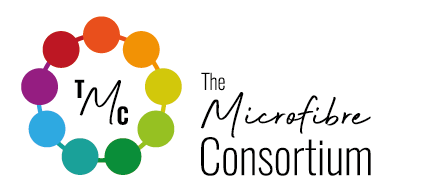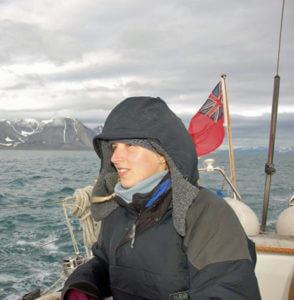
The Microfibre Consortium welcomes new members

The Microfibre Consortium (TMC) has announced details of three new members which have joined the organisation’s initiative to develop practical solutions to minimise microfibre release into the environment from the textile industry. The American Association of Textile Chemists and Colorists (AATCC), Research Institutes of Sweden (RISE) and Textile Exchange have signed up as research and affiliate members, boosting the consortium’s growing international scope to support greater global topic alignment and collaboration. Following the formation and management of The Outdoor Microfibre Consortium by the European Outdoor Group in 2017, The Microfibre Consortium was founded as a stand-alone organisation in November 2018. This move reflected the increasing importance of the topic and growing membership of the consortium, which now incorporates a diverse range of outdoor, fashion, sport and home textiles, brands, retailers and suppliers.TMC facilitates the development of practical solutions for the textile industry to minimise microfibre release to the environment from textile manufacturing and product life cycle. The consortium seeks to connect and translate deep academic research and align it with the reality of commercial supply chain production, to offer solutions to its brand, retail and supplier members and ultimately for the greater good of ecosystems.The American Association of Textile Chemists and Colorists is joining TMC as a research member to continue the drive for global alignment, validation and longer term evolvement of a standardised methodology for achieving the shared aims. AATCC has been one of 10 labs, including the University of Leeds (UoL), that have been supporting the existing Cross Industry Agreement on Microfibres (https://euratex.eu/cia), working towards one aligned method. AATCC has also represented the USA in the recent test methodology validation work that has been conducted by TMC in collaboration with UoL. On the completion of the alignment and validation work, the industry will be in a strong position to move forward with a reliable method of measurement.Research Institutes of Sweden’s (RISE) microfibre work (for instance MinShed https://www.ri.se/en/what-we-do/projects/minshed) already complements TMC workstreams and the organisation will also be a research member, enabling deeper strategic collaboration and expediting of research. Most immediate work will focus on the development of textile understanding on fibres and fabrics. This will provide brands and retailers with the product development support required, to design products with better managed microfibre loss.Formalising an existing strong relationship with TMC, the Textile Exchange is joining as an affiliate member, ensuring topic dissemination across its own large network and helping to leverage complementary work (including but not exclusive to the rPET working group).
TMC will be facilitating two sessions during Textile Exchange’s upcoming Textile Sustainability Conference (https://textileexchange.org/2019-Conference), specific to the topic of microfibre release from textiles.
These new strategic memberships will support the TMC three-year work agenda, approved by the consortium’s recently formed governance board:
1. Development of a test method: The work focuses on continued development of a test method.
2. Consumer facing understanding.
3. To support brands and retailers as they develop product that they can demonstrate releases less fibre during consumer wash laundry.
4. In depth strategic research, which will identify the impact of varying fabric parameters, from yarn, to fabric structure and finishing, in order to draw industry. conclusions and recommendations.
5. Manufacturing understanding: To support the suppliers as they manufacture textiles, in order to understand the key areas of loss within production and how to. develop best practice procedures to manage it.
The combined work of the University of Leeds and TMC continues to contribute meaningfully to the Cross Industry Agreement (CIA), a collaborative effort between a number of industry organisations which are working with a leading group of textile scientists to produce a globally aligned test method to measures material loss from textiles.

Dr Jane Turnbull of the European Outdoor Group comments: “Anyone who has been involved in standard development knows that these things take time, but the progress of the Cross Industry Agreement in the first 18 months continues to impress me. This is in no small part due to the passion and dedication of the institutions that have come together to work on this project. With this in mind, The Microfibre Consortium, University of Leeds and the EOG - as one of the original founders of the agreement - are all proud of our part in this process. We feel that the opportunities presented by attracting new research and affiliate memberships are huge as the industry looks to scale up an aligned understanding on the topic that can lead to real world solutions for businesses.”Diana A Wyman, executive vice president of AATCC, comments: “AATCC and other global organisations are committed to creating a technically sound, repeatable, reproducible test method, applicable to a wide variety of textile materials. We are very pleased to be joining The Microfibre Consortium and excited about the potential of global collaboration of this type on such an important topic.”

TMC’s governance and advisory board was appointed in January 2019. It is chaired by TMC’s Sophie Mather and comprises of representatives from adidas, the European Outdoor Group (which previously formed and managed The Outdoor Microfibre Consortium), W.L. Gore & Associates, Marks & Spencer, Primark, and the University of Leeds.
Board member Philipp Meister, senior director sustainability strategy at adidas comments: “As part of our sustainability efforts, we have been working on the subject of microfibre shedding for a few years, also with numerous partners. In our opinion, the textile industry would greatly benefit from having one ‘go-to’ organisation to define common standards and to develop tools to mitigate and reduce microfibre pollution from textile sources. TMC is perfectly positioned to take this role and to implement positive change based on scientific evidence."
Other strategic affiliate and research memberships are due to be confirmed soon and details will be announced later in the year.
Organisations that would like to discuss joining The Microfibre Consortium should contact findoutmore@microfibreconsortium.com.
To find out more about the consortium, visit www.microfibreconsortium.com



